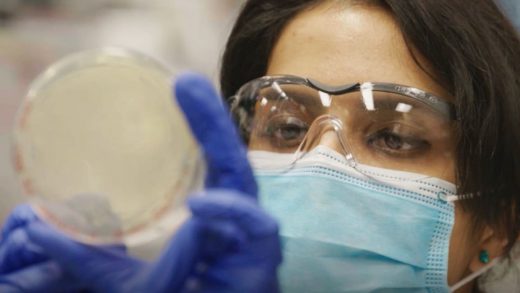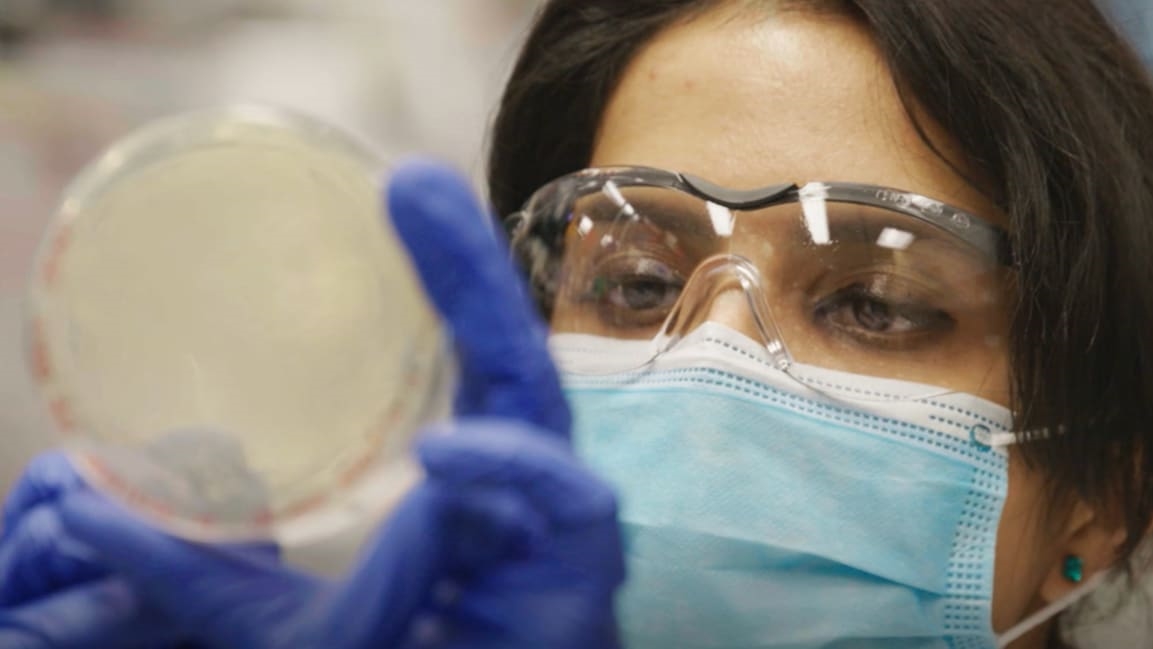National Geographic’s new documentary tells the inside story of Pfizer’s COVID-19 vaccine
It’s in the western Michigan town of Portage where the finishing touches get put on Pfizer’s COVID-19 vaccine, created with German-based BioNTech. It’s where the vials are filled and prepped to be shipped, and so far, the 3,000 workers at this 1,300-acre facility have shipped out about 40 million doses. Last Friday, President Biden arrived to tour the plant and thank the workers.
“I want the American people to understand the extraordinary, extraordinary work that’s being done to undertake the most difficult operational challenge this nation has ever faced,” said the President. “The whole process takes teamwork, precision, and ’round-the-clock focus.”
Now Pfizer and National Geographic are announcing a new 44-minute documentary on that very process, to premiere on the Disney-owned channel on March 11, exactly one year after the World Health Organization declared the coronavirus outbreak a pandemic.
Mission Possible: The Race for a Vaccine is the result of a partnership between Pfizer and Disney, which utilized both its National Geographic documentary team and its CreativeWorks branded content unit. It all began in the middle of last year when Pfizer’s Executive Vice President and Chief Corporate Affairs Officer Sally Susman saw this as a once-in-a-lifetime opportunity, for the company and its people.
“Pfizer is a 170-plus-year-old company, and you only get certain opportunities to change the course of human history,” says Susman. “I think we did it once before when we brought forward penicillin, and if this was going to work, what would it look like? Nat Geo was the first choice for a partner because of their credibility, and their sophistication around the science. They make it easy to understand.”
The film breaks down the extraordinary timeline, process, and strategy behind the vaccine’s development, highlighting the high stakes involved. Perhaps most compelling is its focus on the real people who made this happen, introducing viewers to many of the key players who worked on this breakthrough under unprecedented circumstances. Production began late last summer, with the filmmakers grabbing time piecemeal with everyone from company scientists to Pfizer CEO Albert Bourla and other executives, as their time would allow.
Mike Wiese, head of branded content at National Geographic Partners and Disney CreativeWorks, says that despite all the press coverage, there is a lot more to the story that will be new to viewers. And because they began last summer, long before the vaccine was finalized, the film’s outcome was unknown.
“That’s what makes this a true documentary,” says Wiese. “A lot of brands have a story to tell, they think they’ll do a recital of their brand attributes or things they’ve done, but this is true, unprecedented access, unlike any project we’ve done, and that makes this special. It’s not a filtered look. We got access, and we told the story.”
Susman says working with National Geographic raised the bar for how much the brand was expected to meet documentary standards. “We weren’t interested in creating a commercial,” says Susman. “We wanted to create a fact-based, hard-charging film.”
Last April, the company launched a “Science Will Win” ad campaign to hype excitement for the vaccine race and begin the long process of instilling public confidence in the results. As PSA campaigns from organizations like The Ad Council and others continue to address vaccine hesitancy, this new Pfizer film adds another element to that overall effort. Just 60% of those polled by Pew Research Center in November said they would likely get vaccinated, leaving 40% of Americans yet to be convinced.
Susman says that public perception influenced who was featured in the film, opting for senior people in the lab and factory as much as the typically media-facing C-suite. “Everything we’re doing is about instilling vaccine confidence,” says Susman. “The people in the story, these aren’t the top brass of the company. They’re the people doing the work on the ground. And like any story, the closer you get to the ground, the more you feel its truth.”
(30)



